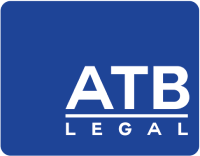The Council of Europe’s Convention on Artificial Intelligence lays a foundational framework for AI governance and regulation , emphasizing the protection of human rights, democracy, and the rule of law.
AI Regulation and Governance: A Legal Perspective
Artificial Intelligence (AI) represents a transformative leap in technological advancement, promising unparalleled benefits across various sectors. However, its pervasive influence necessitates a robust regulatory framework to address the ethical, legal, and social implications. The Council of Europe’s Convention on Artificial Intelligence offers a comprehensive blueprint for navigating these challenges, emphasizing human rights, democracy, and the rule of law.
This blog is a part of our UAE Mainland Litigation, Arbitration services
Fundamental Principles of AI Regulation
The Convention underscores the necessity of embedding core human rights principles within AI systems. These principles include:
- Human Dignity and Autonomy: AI technologies must respect and promote human dignity and autonomy, ensuring that individuals retain control over decisions affecting their lives.
- Non-Discrimination and Equality: AI systems should be designed and deployed to prevent discrimination and promote equality. This includes addressing biases in AI algorithms that could perpetuate or exacerbate social inequalities.
- Transparency and Accountability: Transparency in AI decision-making processes is crucial. Stakeholders must have access to understandable explanations of how AI systems operate, enabling accountability and fostering trust.
Ethical and Legal Frameworks
The legal landscape for AI regulation should be anchored in ethical considerations, ensuring that technological advancements align with societal values. The following components are essential:
- Regulatory Oversight: Establishing independent regulatory bodies tasked with overseeing AI development and deployment. These bodies should have the authority to enforce compliance with ethical standards and legal requirements.
- Impact Assessments: Mandatory impact assessments for AI systems, particularly those with significant societal implications. These assessments should evaluate potential risks and benefits, ensuring informed decision-making.
- Data Protection: Robust data protection laws are imperative. AI systems often rely on vast amounts of personal data, necessitating stringent measures to safeguard privacy and prevent misuse.
AI Governance Structures
Effective AI governance requires a multi-stakeholder approach, involving governments, private sector entities, civil society, and academia. Key governance structures include:
- International Cooperation: AI regulation is a global challenge that requires international collaboration. The Convention advocates for harmonized regulatory frameworks and shared standards, facilitating cross-border cooperation.
- Public Participation: Engaging the public in the governance process is vital. This includes transparent consultation processes and mechanisms for public input, ensuring that AI policies reflect diverse perspectives and societal needs.
- Advisory Committees: Establishing advisory committees comprising experts from various fields to guide on AI-related issues. These committees should offer insights on ethical, legal, and technical aspects, informing policy development.
Regulatory Mechanisms
To operationalize these principles, specific regulatory mechanisms must be implemented:
- Certification and Accreditation: Developing certification schemes for AI systems, ensuring they meet established ethical and technical standards. Accredited entities can provide third-party assessments, enhancing credibility and trust.
- Compliance Frameworks: Creating compliance frameworks that outline clear guidelines for AI developers and users. These frameworks should include penalties for non-compliance and incentives for adherence to best practices.
- Continuous Monitoring: Implementing continuous monitoring systems to track the performance and impact of AI technologies. This allows for the timely identification of issues and adaptive regulatory responses.
Challenges and Considerations
While the Convention provides a robust framework, several challenges must be addressed:
- Technological Complexity: AI technologies are inherently complex, posing difficulties for regulators in understanding and overseeing these systems. Continuous education and collaboration with technical experts are essential.
- Dynamic Nature of AI: AI technologies evolve rapidly, necessitating flexible and adaptive regulatory approaches. Static regulations may quickly become outdated, requiring mechanisms for periodic review and updates.
- Balancing Innovation and Regulation: Striking a balance between promoting innovation and ensuring responsible AI use is critical. Over-regulation could stifle technological progress, while under-regulation may lead to ethical breaches and societal harm.
The Need for a Concerted Effort
The Council of Europe’s Convention on Artificial Intelligence lays a foundational framework for AI regulation and governance, emphasizing the protection of human rights, democracy, and the rule of law. As AI continues to evolve, regulatory frameworks must adapt to address emerging challenges, fostering a responsible and ethical AI ecosystem.
Legal professionals play a crucial role in shaping these frameworks, ensuring that AI technologies serve the greater good while safeguarding fundamental rights.
The path forward requires a concerted effort from all stakeholders, leveraging the principles outlined in the Convention to create a sustainable and equitable AI future.
